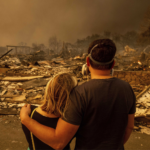February of 2025 will mark the third year of the ongoing Russia-Ukraine War, a conflict that has continued since Russia’s invasion of Ukraine in February 2022. The war brought many casualties to both sides, with Russian forces suffering over 600,000 losses, and Ukrainian losses estimated between 60,000-100,000 killed, an additional 400,000 wounded. As of now, Russia occupies around 20% of Ukraine’s total territory, with most of them being located in the southern and eastern regions of the country.
On August 6, 2024, Ukrainian forces launched the biggest foreign incursion into Russia since World War II, advancing across the border and marching into the western Kursk region. Over the next couple of months, Ukraine lost over 40% of the original 380 square miles of Kursk they had occupied, but Russian troops were unable to force them back over the border. On January 5, 2025, another offensive surprise was launched by the Ukranians in an attempt to seize more territory in the area. At the same time, Russian forces have been fighting in Ukraine’s eastern region of Donetsk, gaining a total of 4,168 square kilometers in 2024.
In early October of 2024, North Korea began deploying forces to Russia to help the Russians’ lack of manpower. Reports show that around 11,000 North Korean troops have been stationed in Kursk to stop the Ukrainian advance and push the troops back over the border, though they have been unsuccessful thus far. The North Koreans appear to be unprepared for warfare, having already lost one-fourth of their troops as casualties.
A month later, in November, the Biden administration authorized Ukraine to utilize US long-range missiles (Army Tactical Missile Systems, or ATACMS) against Russian targets. Ukraine fired the missiles over the border for the first time two days later, aiming at a facility in Bryansk. There were no casualties or damage, but Putin updated Russia’s nuclear doctrine, lowering the bar to the use of nuclear weapons.
As Biden’s presidency comes to an end, Ukraine could face a massive decrease in funding and support from the United States, due to the incoming Trump administration. Trump and other Republican politicians have made it clear that they’re against sending aid packages to Ukraine, which could put the country in a dire situation, possibly lacking this vital support. In the past, Trump has referred to negotiating deals with Putin to stop the war, but has remained silent on whether or not it would involve Ukraine ceding territory to Russia. U.S. support is crucial to Ukrainian war efforts, and it has remained unclear how the war will continue to play out into the new year.







